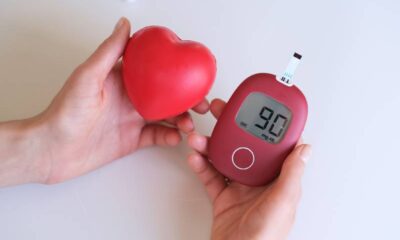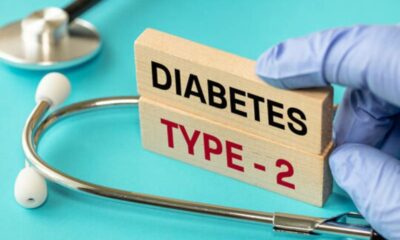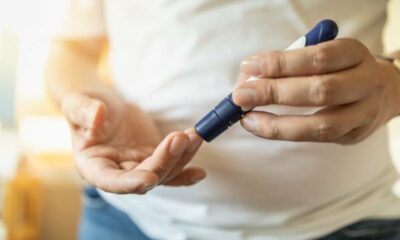Diabetes, a chronic condition marked by elevated blood sugar levels, affects millions of people worldwide. Often dubbed a “silent killer,” diabetes can progress stealthily for years without causing any noticeable symptoms. This delay in diagnosis can lead to serious complications affecting your heart, eyes, kidneys, and nerves. However, your body often sends subtle warning signs in the early stages. Recognizing these 10 early symptoms of diabetes is crucial for seeking timely diagnosis and preventing complications.
1. Excessive Urination
One of the first and most common signs of diabetes is urinating more frequently than usual. When your blood sugar levels rise, your kidneys work overtime to filter and remove excess sugar from your bloodstream. This excess sugar ends up in your urine, leading you to urinate more often, particularly at night.
What to look for: Increased urination, especially at night, waking up to use the restroom, feeling an urgent need to urinate frequently.
2. Excessive Thirst
Frequent urination can lead to dehydration, triggering your body’s thirst mechanism to replenish fluids. This creates a cycle of excessive thirst and urination. Even after drinking large amounts of fluids, you may still feel parched, indicating a potential underlying issue.
What to look for: Constant thirst, feeling dehydrated even after drinking fluids, increased water intake.
3. Unexplained Weight Loss
While unexplained weight loss can be a welcome change for some, it can be a red flag for diabetes. When your body can’t effectively use glucose (sugar) for energy due to insulin deficiency or resistance, it starts breaking down muscle and stored fat for fuel. This can lead to unintentional weight loss despite maintaining your usual eating habits.
What to look for: Sudden or unexplained weight loss without changes in diet or exercise routine.
4. Increased Hunger (Polyphagia)
Even though your body isn’t using glucose properly in diabetes, your cells are still starved for energy. This can trigger feelings of increased hunger, even after eating. You might find yourself snacking more frequently or having larger portions at meals but still feeling unsatisfied.
What to look for: Constant hunger pangs, feeling unsatisfied after eating, increased food intake.
5. Extreme Fatigue and Weakness
Diabetes can zap your energy levels. When your cells aren’t getting enough glucose for energy production, you may experience constant fatigue, tiredness, and a lack of motivation. This can significantly impact your daily activities and overall well-being.
What to look for: Feeling tired and sluggish most of the time, difficulty concentrating, decreased energy levels.
6. Blurred Vision
Blurry vision is a common symptom of uncontrolled diabetes. High blood sugar levels can damage the tiny blood vessels in the retina, the light-sensitive layer at the back of your eye. This damage can cause temporary blurred vision, especially when your blood sugar fluctuates.
What to look for: Sudden or gradual blurring of vision, difficulty focusing on close objects, seeing spots or floaters.
7. Slow Healing Wounds and Skin Issues
Diabetes can impair blood circulation and reduce the body’s ability to fight infection. This can lead to slow healing of wounds, cuts, or scrapes. You may also experience dry, itchy skin or develop skin infections more frequently.
What to look for: Cuts, wounds, or scrapes that take a long time to heal, recurring skin infections, dry and itchy skin.
8. Tingling or Numbness in Hands and Feet
Diabetic neuropathy, nerve damage caused by high blood sugar, can manifest as tingling, burning, or numbness in the hands and feet. This is due to damage to the nerves, often starting in the extremities and progressing upwards.
What to look for: Tingling, prickling, or burning sensations in the hands and feet, numbness that makes it difficult to feel your feet.
9. Frequent Yeast Infections
Both men and women with diabetes are more prone to developing yeast infections. High blood sugar levels can create a breeding ground for the fungus Candida albicans, which causes yeast infections.
What to look for: Recurring vaginal yeast infections in women, fungal infections on the penis or scrotum in men, increased itching and irritation in the genital area.
10. Fruity-Smelling Breath
In a rare but serious complication called diabetic ketoacidosis (DKA), the body produces ketones as an alternative energy source when it can’t use glucose. Ketones have a distinct fruity smell that can be detected on the breath. DKA is a medical emergency and requires immediate medical attention.
What to look for: Fruity-smelling breath along with other symptoms like nausea, vomiting, and severe abdominal pain.
Don’t Ignore These Warning Signs: Take Action for Your Health
Experiencing any of these early symptoms of diabetes shouldn’t cause panic, but it should prompt action. Early detection and treatment are crucial for preventing complications. Here’s what you should do:
- Schedule an Appointment with Your Doctor: Discuss your symptoms and risk factors for diabetes. Your doctor will likely recommend a blood sugar test to determine if you have diabetes.
- Get a Comprehensive Diabetes Screening: If your blood sugar test indicates prediabetes or diabetes, a comprehensive screening can assess the extent of the condition and identify any potential complications.
- Embrace a Healthy Lifestyle: Regardless of your diagnosis, adopting healthy habits like a balanced diet, regular exercise, and maintaining a healthy weight can significantly improve your blood sugar control and overall well-being.
- Connect with a Diabetes Educator: A diabetes educator can provide valuable information, support, and guidance on managing your diabetes on a daily basis.
Empowering readers with knowledge and resources strengthens your article’s impact and creates a valuable tool for those who might be experiencing early signs of diabetes.

 Diabetology2 weeks ago
Diabetology2 weeks ago
 Diabetology2 weeks ago
Diabetology2 weeks ago
 Diabetology7 days ago
Diabetology7 days ago
 Diabetology17 hours ago
Diabetology17 hours ago











